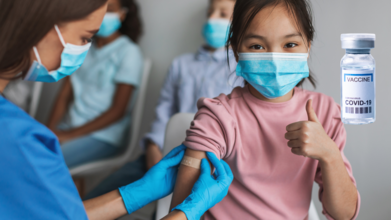- Health Conditions A-Z
- Health & Wellness
- Nutrition
- Fitness
- Health News
- Ayurveda
- Videos
- Medicine A-Z
- Parenting
- Web Stories
Increased Screen Timings Have Lead to ADHD: Key Symptoms

Screentime (Credit: Canva)
While mobile phones, laptops and televisions are merely gadgets designed to be used for recreation, they have become addictions to many. This astronomically increased screen time has lead triggered a health pandemic across the globe. Now the latest research has found that it is also causing Attention Deficiency Hyperactivity Disorder (ADHD), a neaurological disorder that is manifested in symptoms like inattention, hyperactivity and impulsive behaviour. According to the World Health Organisation (WHO), an estimated 5-8% of children in India have ADHD. It affects a person's behaviour and can impact many aspects of their life.
Recent research has indicated that increased screen timings are leading to overstimulation of the brain and thereby, exacerbating the symptoms of ADHD. All electronic devices like phones, tablets, laptops and TV screens overstimulate the brain, keeping it in a hyperactive state and triggering impulsive behaviour. They also promote a sedentary lifestyle, which makes kids skip essential physical activity and leads them to live an isolated life. Moreover, the blue light emitted from screens is harmful to the eyes and leads to delay in children falling asleep. This leads to sleep deprivation.
How To Identify ADHD?
The American Psychiatric Association (APA) defines ADHD as a behavioural condition that makes it difficult to focus on everyday tasks and routines. It can severely impact one's life, by hindering their day-to-day activities.Many children experience challenges such as difficulty sitting still, waiting their turn, maintaining attention, being fidgety, and acting impulsively. However, children with Attention-deficit/hyperactivity disorder (ADHD) exhibit these behaviours to a degree that is significantly more severe than what is expected for their age or developmental stage. The symptoms of ADHD—hyperactivity, impulsivity, disorganization, and inattention—can cause considerable distress and lead to difficulties in various aspects of life, including at home, in school, or within relationships. It is important to note that these symptoms are not due to defiance or an inability to understand tasks or instructions.
France Takes Steps To Prevent
French Government recently announced its ban on the use of mobile phones and any other electronic communications terminal equipment (like tablets or smart watches) within schools and colleges. This ban is also valid during extracurricular time and effective during all school activities organized outside of school or educational institutions. Before France, in 2007, Italy became the first country to introduce a school phone ban. While the West is moving towards securing the children health, there is no such law in India.
Young Kids Should Get Covid-19 Vaccine: US Pediatric Group Breaks Away From CDC Guidelines

Credits: Canva
August 19 marked a sharp split in U.S. vaccine policy after the American Academy of Pediatrics (AAP) released updated immunization guidelines that call for COVID-19 vaccination in young children. The move breaks from recent federal guidance shaped by Health and Human Services Secretary Robert F. Kennedy Jr.
Why the AAP is Standing Apart
The AAP, which represents more than 65,000 board-certified pediatricians, has long been a central authority on children’s health. In June, the organization had already signaled its concern, saying the federal process for creating vaccine schedules was “no longer credible” after Kennedy dismissed the 17-member Advisory Committee on Immunization Practices. That panel traditionally guides the CDC’s vaccine recommendations.
Kennedy replaced the group with appointees that many in the medical community consider unqualified, several with ties to anti-vaccine organizations. The May announcement that COVID-19 vaccines would no longer be on the CDC’s recommended list for healthy children and pregnant women further deepened tensions.
“The AAP will continue to provide recommendations that are rooted in science and in the best interest of children and families,” AAP President Dr. Susan J. Kressly said in a statement.
Also Read: CDC No Longer Recommends COVID Vaccine For Kids And Pregnant Women - What Do Experts Think?
What the AAP Recommends for Kids
The updated AAP schedule covers vaccines from birth through age 18, including influenza, RSV, and COVID-19. The pediatric group recommends:
Ages 6 months to 23 months: All children should receive the updated COVID-19 vaccine to lower the risk of severe illness.
Ages 2 to 18: Children and adolescents without other high-risk conditions should be offered the vaccine if not already immunized.
High-risk children and adults: Those with conditions like weakened immune systems should receive the vaccine regardless of age.
The organization stressed that its guidance is based on peer-reviewed evidence, countering federal messaging that leaves vaccination decisions to parental consultation with physicians.
Federal Guidance Under Kennedy
The CDC has not completely eliminated COVID-19 vaccination from its schedule but shifted language in August to a softer stance. Instead of recommending annual doses for children, the agency now advises parents to “consult with their child’s physician” to decide.
Kennedy has said publicly that the vaccine should be reserved for people over 65 or those at high risk. The CDC website still lists recommendations for everyone over six months, but with a notice that the information is being updated to reflect new schedules.
Experts have warned this change may create barriers to access, since insurance coverage often mirrors CDC recommendations. Families who want their children vaccinated but do not fall under the new federal priority categories could be forced to pay out of pocket.
Read More: FDA Approves New Covid Vaccine For Kids With Selective Eligibility
The Growing Clash Between AAP and HHS
The disagreement has sparked sharp exchanges between pediatric leaders and the federal government. HHS Communications Director Andrew Nixon accused the AAP of advancing commercial interests, citing pharmaceutical funding ties.
“By bypassing the CDC’s advisory process and issuing its own recommendations, the AAP is putting politics above children’s health,” Nixon said in a statement.
Kennedy echoed those concerns on social media, calling the pediatric guidance “corporate-friendly” and suggesting it primarily benefits vaccine manufacturers. He also warned that diverging from federal recommendations could leave doctors legally vulnerable, since liability protections under the Vaccine Injury Act apply only to CDC-approved schedules.
AAP President Dr. Kressly rejected those claims. “This attack on the integrity of pediatricians is unfortunate, but it does not change the facts. Our immunization recommendations are rooted in decades of peer-reviewed science,” she said.
What Comes Next
The newly appointed federal Advisory Committee on Immunization Practices has not yet voted on COVID-19 guidance and is expected to meet again in early fall. Meanwhile, the FDA is weighing whether to revoke authorization of the Pfizer COVID-19 vaccine for healthy children.
The split leaves parents facing a confusing landscape. While federal authorities have scaled back recommendations, pediatricians say the science still supports protecting children with the COVID-19 shot. As the AAP put it, the mission is clear: to keep kids, families, and communities healthy, regardless of shifting political winds.
Contact Lens Health Week 2025: Why Is It Important For Us To Observe A Week For Eye Health?

Credits: Canva
Contact Lens Health Week, observed annually in the third week of August, comes to a close today. This year, it ran from August 18 to 22, serving as an important reminder of how crucial eye health is in our daily lives. While it may seem like a niche health observance, the initiative highlights an issue that affects millions worldwide: the proper care and safe use of contact lenses.
Why Eye Health Cannot Be Overlooked
Vision is one of the most vital senses, yet it is often taken for granted. With modern technology, access to corrective options such as glasses, contact lenses, surgeries, and even transplants has made many believe that eyesight will always be easily restorable. But experts emphasize that carelessness with something as simple as contact lenses can lead to lasting damage. Contact lenses sit directly on the eye, and poor hygiene or overuse can compromise vision. This is exactly why Contact Lens Health Week remains significant.
A Brief History of Vision Correction
The journey of improving human sight stretches back centuries. Records suggest that spectacles first appeared in the late 1200s to early 1300s, with Salvino D’Armate often credited as their inventor. Initially, these crude lenses were luxury items reserved for the wealthy. By the time of the industrial revolution, glasses became widely available and affordable, changing lives across classes.
In the early 1800s, scientist Thomas Young built the first prototype of a contact lens, using wax and water-filled lenses. Over the following century and a half, various improvements led to a more practical design. By the 1940s, significant strides had been made in creating lenses suitable for everyday wear. However, it wasn’t until the introduction of soft lenses in the 1970s that contact lenses truly became mainstream.
The Rise of Contact Lenses, and the Risks
Today, millions of people choose between glasses and contact lenses. Contact lenses offer freedom, convenience, and in many cases, improved aesthetics. Yet, their popularity has also led to widespread misuse. Many users overlook the two key rules: sticking to the replacement schedule and respecting the wear schedule. Even the most advanced lenses should not be worn beyond 30 consecutive days and nights. Ignoring this can reduce oxygen flow to the eyes, cause infections, and in severe cases, lead to vision loss.
Why Contact Lens Health Week Matters
The week serves as a call to action for everyone who relies on contact lenses. It emphasizes the need for proper cleaning, regular replacement, and awareness of risks linked to negligence. Simple practices, like washing hands before touching lenses, never reusing solution, and removing lenses before sleeping, can prevent long-term harm.
Milestones in Contact Lens Development
1508: Leonardo da Vinci illustrates the first concept of contact lenses.
1939: Plastic technology enables the creation of the first plastic contact lenses.
1971: Soft contact lenses gain public approval for comfort.
1987: Disposable soft contact lenses are introduced, making them more accessible.
Serena Williams Opens Up About Her Weight Loss Journey With GLP-1 Medication

Credits: Instagram
Serena Williams is sharing a new chapter in her wellness journey.
The tennis icon, 43, revealed that she turned to a GLP-1 medication to support her weight-loss goals, a decision that helped her shed more than 31 pounds and, in her words, “feel light physically and light mentally.” She told to PEOPLE.
“I feel great,” Williams told PEOPLE. “I feel really good and healthy. I feel light physically and light mentally.”
Postpartum Struggles with Weight
Williams explained that her weight struggles began after giving birth to her first daughter, Alexis Olympia, in 2017. Despite maintaining the disciplined lifestyle of a professional athlete, her body responded differently after pregnancy.
“I never was able to get to the weight I needed to be no matter what I did, no matter how much I trained,” she said. “It was crazy because I'd never been in a place like that in my life where I worked so hard, ate so healthy and could never get down to where I needed to be at.”
READ: US Doctor Claims Weight Loss Drug, GLP-1, Leads To Suicidal Thoughts And Behaviors
The 23-time Grand Slam champion admitted the experience was frustrating because she had always relied on her work ethic. “I had never taken shortcuts in my career and always worked really hard. I know what it takes to be the best,” she told PEOPLE. “So it was very frustrating to do all the same things and never be able to change that number on the scale or the way my body looked.”
After welcoming her second daughter, Adira River, in August 2023, Williams faced a similar challenge. She lost some weight in the first two weeks postpartum, but the progress quickly plateaued. “I never lost another pound,” she recalled.
Turning to GLP-1 for Support
Realizing that even her most disciplined training routine was not giving her the results she wanted, Williams decided to explore new options. That’s when she partnered with Ro, a direct-to-patient healthcare company, to begin GLP-1 treatment.
READ: How Weight Loss Drugs Change Ones Relationship With Food?
What Is GLP-1?
GLP-1 is short for glucagon-like peptide-1 receptor agonists. It is a class of medications that works in the brain to regulate appetite and satiety. Well-known brands include Ozempic and Mounjaro, both of which have generated global discussion about their effectiveness in weight management.
READ: This Naturally Occurring Molecule May Have Ozempic-like Benefits Without The Side Effects
Williams acknowledged that she was initially hesitant. “I did a lot of research on it,” she told PEOPLE. “I was like, ‘Is this a shortcut? What are the benefits? What are not the benefits?’ I really wanted to dive into it before I just did it.”
After six months, when she had stopped breastfeeding Adira, she began weekly injections with her doctor’s guidance. “They were super supportive and it was easy to get the medication,” she said. “I lost over 31 pounds using my GLP-1 and I was really excited about that weight loss.”
Now serving as a celebrity patient ambassador for Ro, Williams emphasizes that the treatment didn’t replace her active lifestyle, it enhanced it.
Feeling Stronger and More Energetic
Williams said her transformation has been about much more than the number on the scale. She’s regained energy, movement, and a sense of ease in her daily life.
“I just can do more. I'm more active. My joints don't hurt as much,” she explained. “I just feel like something as simple as just getting down is a lot easier for me. And I do it a lot faster. I feel like I have a lot of energy and it's great. I just feel pretty good about it.”
Her renewed energy has also inspired her to set new goals, including training for a half marathon.
READ: GLP-1 Drugs Could Be Used To Treat Chronic Kidney Disease
Why Serena Shared Her Story
Throughout her career, Williams has been admired for her transparency, whether on the tennis court or in her personal life. She told PEOPLE that she wanted to share her GLP-1 journey because she knows many people struggle with the same issues, regardless of their dedication to healthy living.
“GLP-1 helped me enhance everything that I was already doing, eating healthy and working out, whether it was as a professional athlete at the top level of tennis or just going to the gym every day,” she said. “So I think that it’s important for everyone to hear my story. And I feel like there's a lot of people that can relate.”
READ: Foods That Mimic Ozempic Results: Natural GLP-1 Boosters That Control Appetite
Balancing Weight Loss with Self-Love
While she is proud of her progress, Williams is equally clear that her confidence and self-worth were never tied to her weight.
READ: Trust Your Instincts, Serena Williams Urges Women To Listen To Their Bodies
“Weight loss should never really change your self image,” she said. “Women often experience judgment about their bodies at any size, and I'm no stranger to that. So I feel like you should love yourself at any size and any look.”
She added that while her heavier weight caused her some physical discomfort, including joint pain, there was nothing inherently wrong with it. “The size I was before, there was nothing wrong with it. It's just not what I wanted to have,” she said. “I just knew that I wanted to be where I personally felt comfortable.”
Teaching Her Daughters About Confidence
Williams, who shares her daughters with husband Alexis Ohanian, said she has made it a priority to talk about body image and positivity at home.
“With me going through what I've went through growing up in public and just having millions of people commenting on my body, it's really important to teach them to be confident at any size, just like I try to be,” she said.
She hopes to pass down a lesson she has learned from looking back at old photographs. “Whether I was smaller or thicker, at that moment I felt so confident. And I looked great, too. So I just think it's so important to love who you are. You'll never get that moment back. You don't want to judge yourself when you're just always showing up as your best.”
Her message is simple: health and confidence go hand in hand. “I always felt comfortable at any size,” she reflected. “But now I feel like my body is thanking me for being at a place where I can move easier, feel lighter, and do more.”
© 2024 Bennett, Coleman & Company Limited

